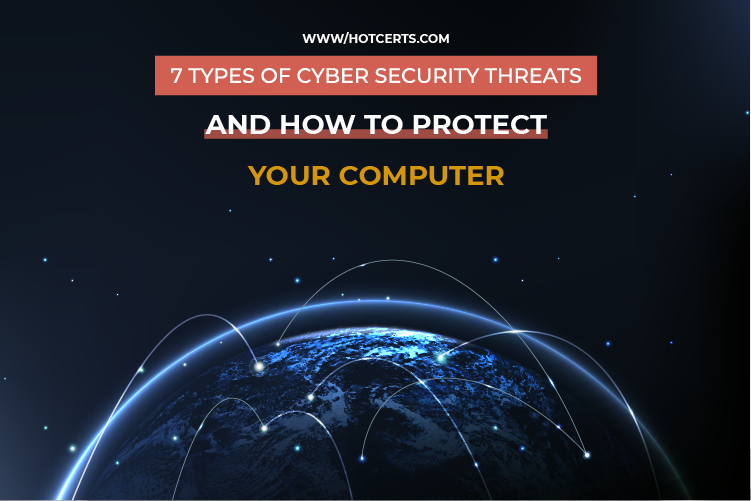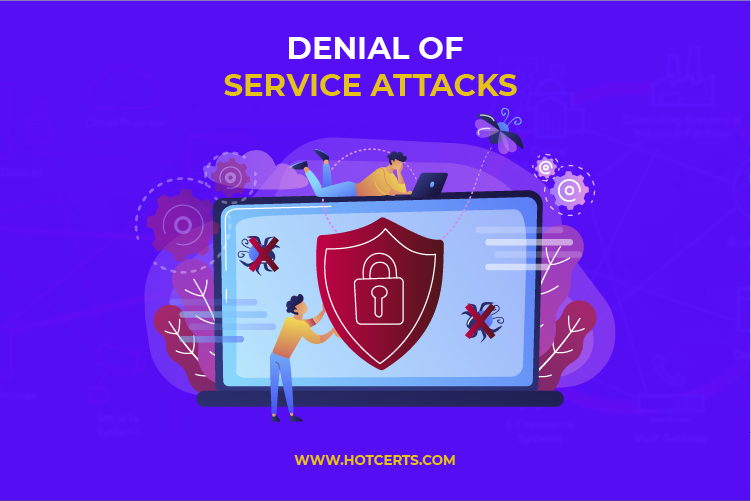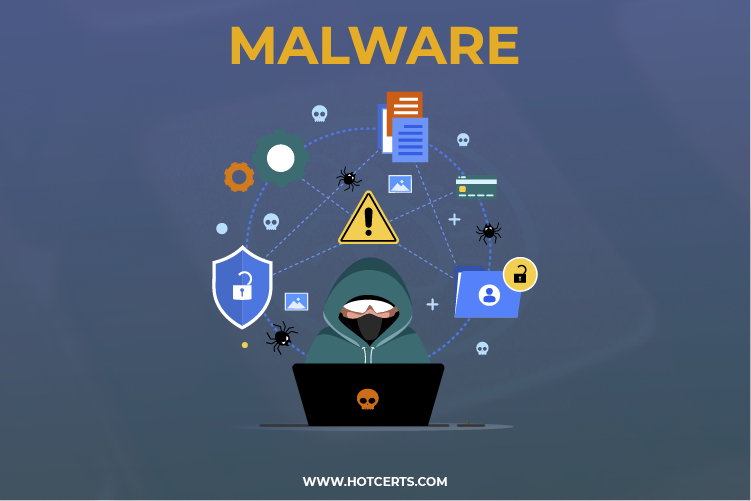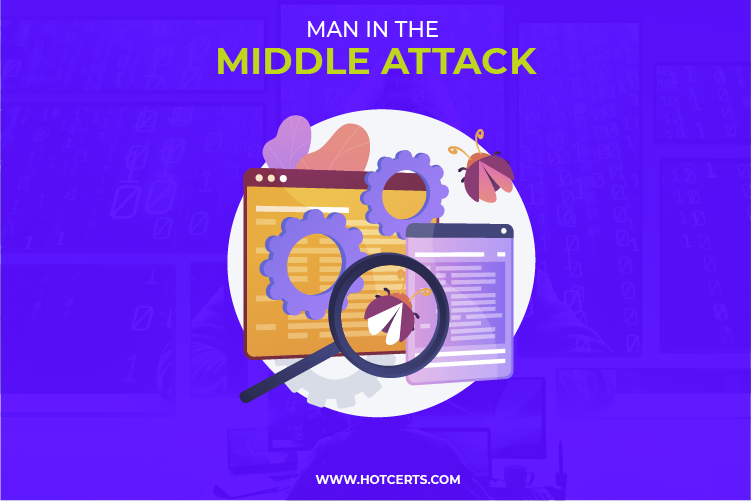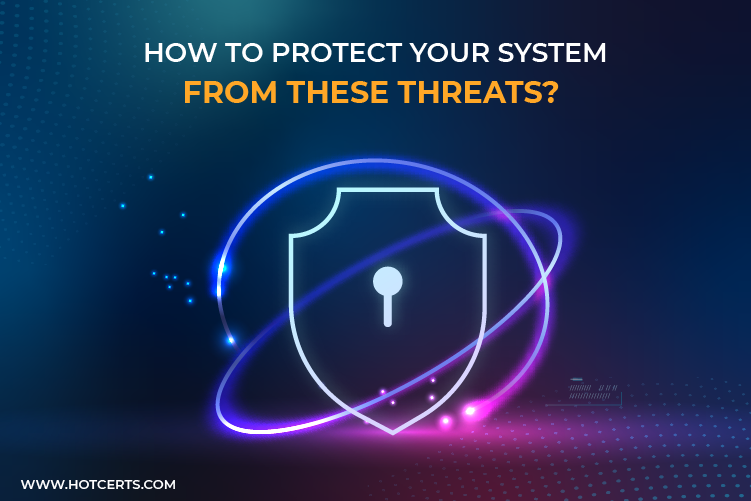7 types of cyber security threats and how to protect your computer:
Internet-connected systems like software, hardware, and data are protected by Cyber security from cyber threats. Individuals and businesses use this technique to protect against unauthorized data centers and other computerized systems. A strong cybersecurity strategy can provide a reasonable security force against malicious attacks designed to access, modify, delete, destroy, or rob your organization or your system or sensitive data.
Cybersecurity also helps prevent attacks aimed at disabling or interfering with the operation of a system or device. Cybersecurity continues to grow in importance, coupled with the growing number of users, devices, and programs in modern enterprises and the flood of data, many of which are sensitive or confidential. The problem is further complicated by the amount and sophistication of cyber attackers and attack methods.
Cyber attackers can use sensitive personal or corporate data to steal information or access financial accounts. That’s why cybersecurity professionals are essential to protecting your personal data. Here is a list of the types of cyber-security threats that can affect your computer:
● Phishing Attacks
These attacks are primarily carried out by sending many emails to different users requesting them to click on fake links or provide sensitive information. Phishing emails can be disguised as legitimate and trusted software programs such as Office 365 and Apple. Senders often ask you to click a link and enter your password. The password is stolen and used to hack your account.
The most effective method to prevent these attacks is to view the sender’s email address and carefully monitor the email before clicking anything. If it looks slightly different from your regular email address, such as after it contains a lot of characters, it could be a fraudulent email. You can also hover over a link to see the actual linked website. You need to install an anti-phishing email security program that scans incoming emails for viruses, malicious code, or suspicious links.
● Denial-of-Service Attacks
Denial of service (DoS) attacks are a type of cyberattack that is common in business or large computer systems. These cyberattacks are carried out by flooding the network or data center with heavy traffic and slowing down the system, making it impossible to perform normal services to legitimate users. If the system becomes unavailable, cyber attackers may adopt other accessing sensitive information. You can protect your systems from these attacks by implementing different network security protocols.
This may include firewalls, VPNs, content filters, email scanning programs, and other load balancing technologies. It would be best to eliminate human error as much as possible to prevent unauthorized access to the server.
● Structured Language Query injection (or SQL)
Structured Language Query injection (or SQL) is a type of cyberattack used to control a database and steal data from the database. Cybercriminals exploit vulnerabilities in data-driven applications to inject malicious code into the database through malicious SQL statements. This gives you access to the sensitive information contained in the database.
● Malware
Malicious software is abbreviated to malware, and its various types can affect computer systems. You may have heard the terms Trojan, worm, and virus. These terms describe how malware infects your computer.
Worms: This type of malware is a single piece of software that replicates and spreads from computer to computer.
Trojan: This type of malicious code is not duplicated but pretends to be the program users usually install. When the user clicks on a fake executable file, the program is embedded in the hard drive and causes damage from there.
Virus: This type of malware attack uses a standalone software program as a means. The virus embeds some malicious code into a program that causes a user’s computer system to perform malicious actions.
Spyware: This type of cyber threat spies unsuspecting users and unknowingly collects information from computer systems. Spyware may log keystrokes and monitor information sent and received online.
You can protect your computer from them is to never click on suspicious websites, pop-ups, or emails. You also need to install anti-malware software to keep it up to date.
● Man-in-the-Middle Attack
A man-in-the-middle (MITM) attack is carried out by a program or threat placed between the victim and the target entity that the victim is trying to access. For example, if someone logs into the Google Drive of their device for Business account and the MITM attack program are in between, they will inadvertently enter Google’s credentials into the malicious program.
After that, the malicious program will be able to access your account. One easy way to prevent these attacks is to make sure that all websites you visit start with HTTPS. The “S” is the most crucial letter to indicate that your website is safe. Another precaution is not to connect to a public WiFi router. Many attackers could intercept your personal information because you do not need a security key to log in.
● Drive-By Downloads
One of the most dangerous attacks is drive-by downloads, as it is often not due to user error or input. They might occur without the user knowing or clicking on something suspicious. Drive-by downloads are usually incorrectly retrieved from web pages. When a web page is visited by an end-user, the program is unknowingly embedded in the system.
This attack can be prevented by installing antivirus software to detect these programs before downloading them to your computer. The most popular antivirus programs identify threats and quarantine them before they cause damage.
● Password Attack
The most common type of security adopted by all users is passwords. Use these to log in to your computer, phone, or music device. One of the common types of password attacks is to use social engineering to hack a user’s account. This can be just sending phishing emails, monitoring social media accounts, or even looking over your shoulder as you type.
The most efficient way to prevent password attacks is to maintain strong passwords and change them frequently. It would be best not to use the same password for different accounts, and the password must contain special characters, numbers, lowercase letters, and uppercase letters.
How to protect your system from these threats?
Cybersecurity protects your data, computers, servers, mobile devices, networks from malicious attacks. This is also known as information technology security or electronic information security. You can divide the field of cybersecurity into several different sections, and coordination within your organization is vital to get favorable results for your cybersecurity program. These sections include:
● Network Security
This type of security protects your computer network from attacks inside and outside the network. We use various techniques to prevent the occurrence of malicious software and other data breaches. Network security uses a variety of protocols to block attacks but allows authorized users to access a secure network. One of the essential layers to protect your network is the firewall. It acts as a protective barrier between the network and external untrusted network connections.
Firewalls can block and allow traffic to your network based on your security settings. To build a secure network, email security is a very crucial factor as phishing attacks are the most common cyber-attack. Email security may consist of programs designed to scan incoming and outgoing messages to monitor potential phishing attacks.
● Application Security
Application security is the process of protecting sensitive information at the app level. Most of these security measures need to be implemented before deploying your application. Application security may include tactics such as requiring a strong password for the user. It may also include features such as two-step verification, security questions, and other safeguards to verify if you are what you are stating to be.
● Cloud Security
The importance of the cloud can not be neglected as most of our online life is stored on it. Most commonly, Google Drive, Microsoft OneDrive, and Apple iCloud are used for storage. Since these platforms store large amounts of data, it is essential to keep them secure at all times. Cloud security can also include business services held in the data center. To ensure proper cloud security measures, you need to consider end-user interfaces, data storage security, backup plans, and human error exposing your network.
● Operational Security
The term refers to all internal cybersecurity risk management processes. This type of management typically employs many risk managers to ensure a backup plan in case your data is compromised. Operational security also ensures that employees are informed and educated about the best practices for keeping personal and business information safe.
Are you considering many ways in which cyber-attacks can occur? While this guide helps raise the security awareness of the Internet, it’s still a great idea to get the help of a security expert. I hope that this guide will help you understand the common types of cyberattacks and prevent them.
You can read more Hotcerts blogs here.
